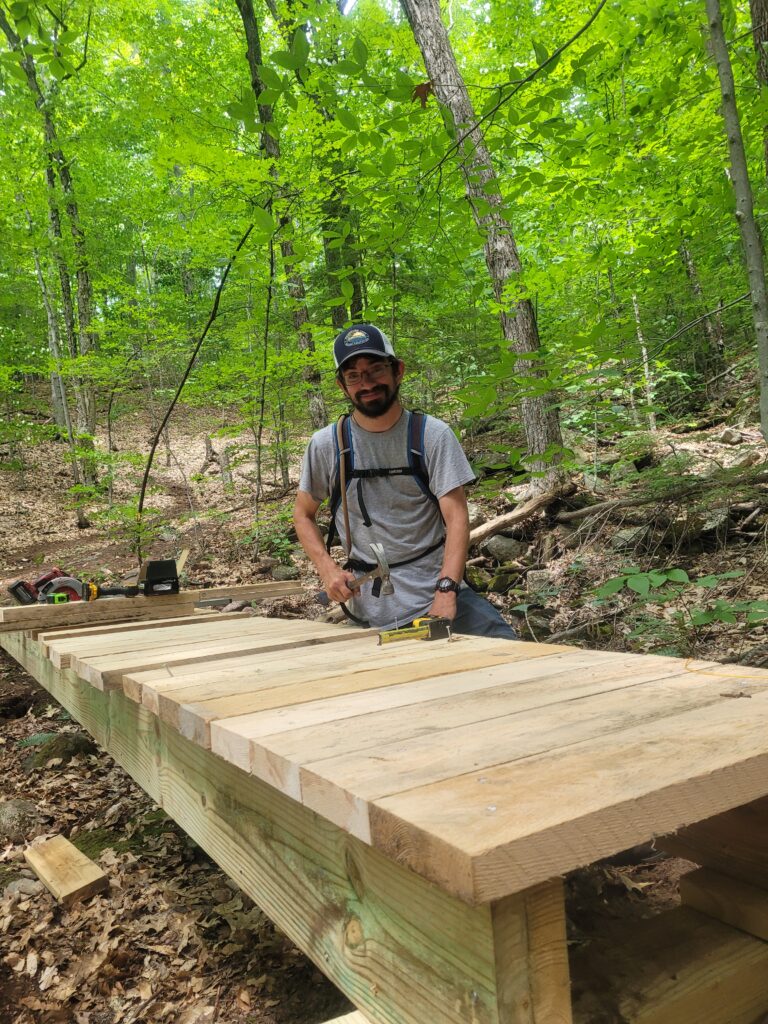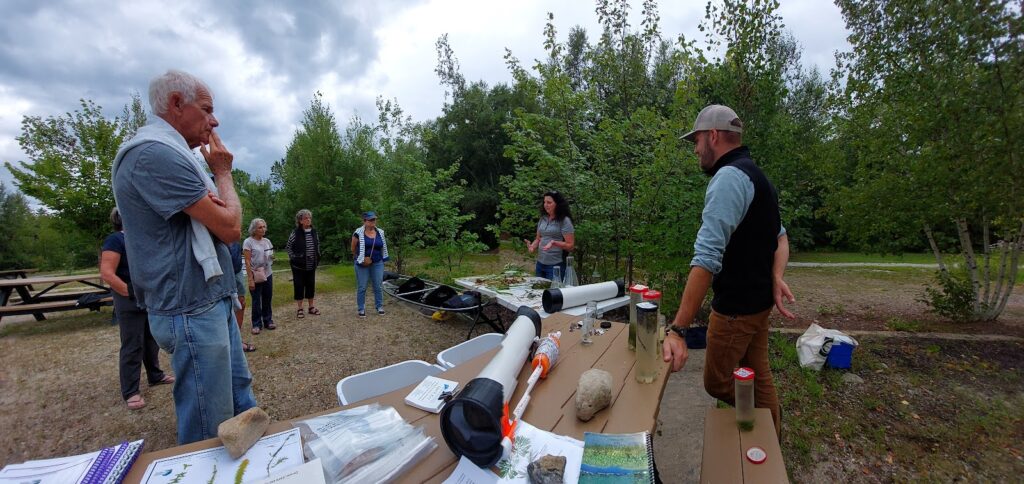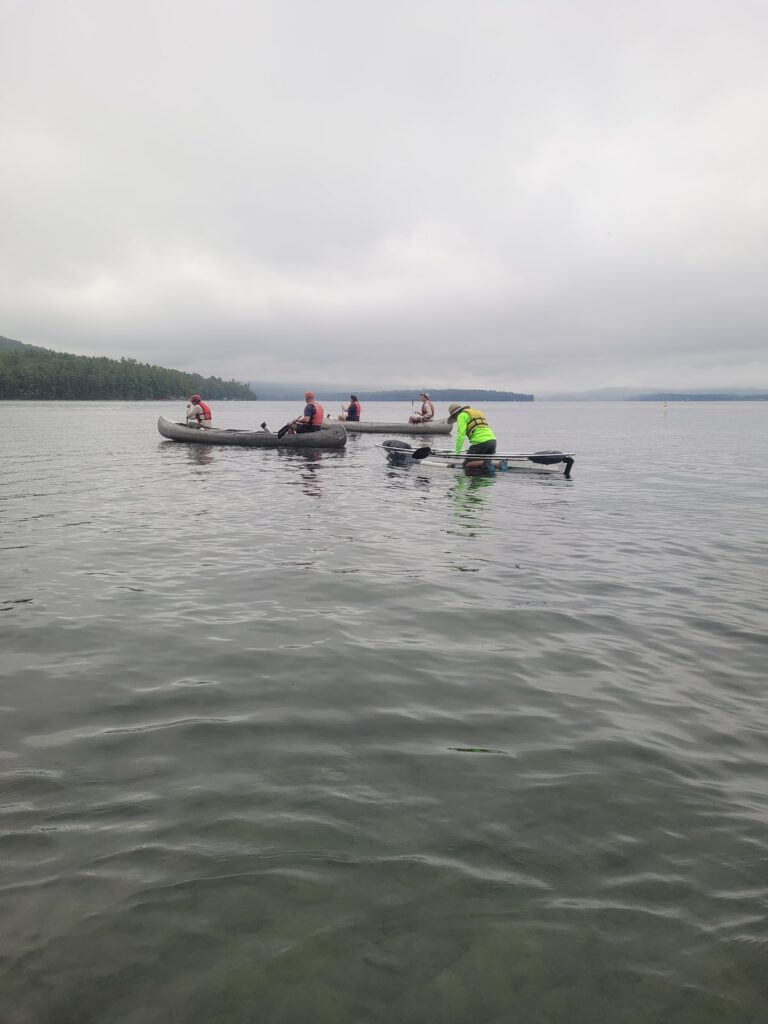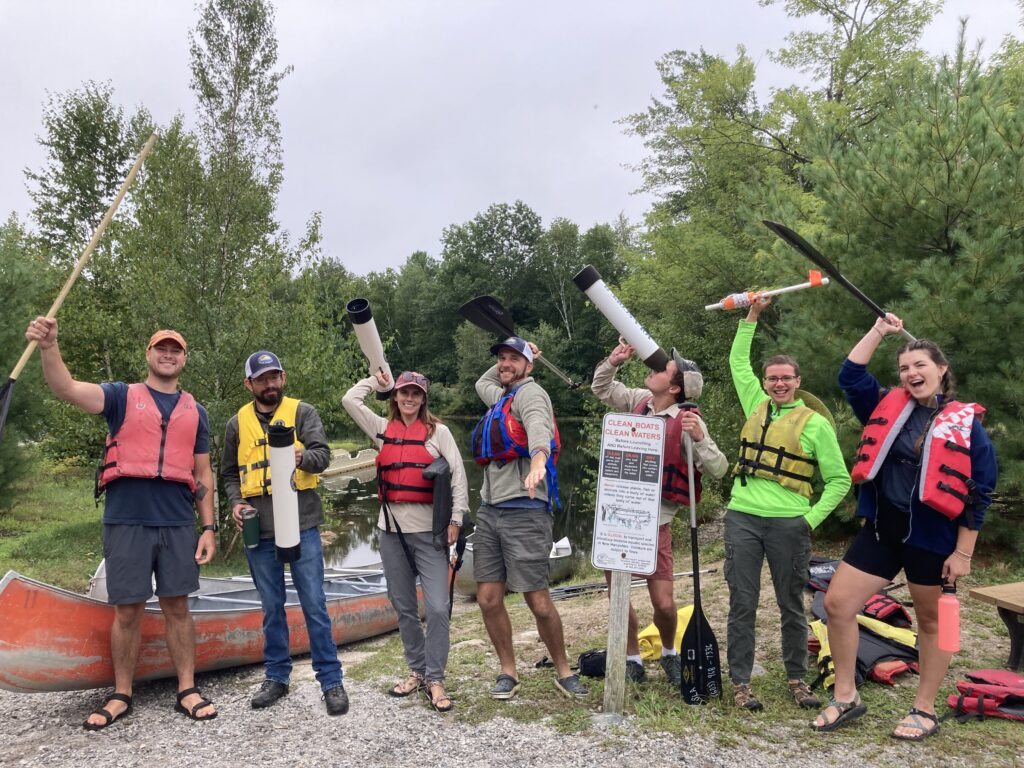The past month has been exceptionally eventful as a Watershed Steward for the Newfound Lake Region Association. One interesting task was building a bridge and clearing a new trail in the Hebron Town Forest in partnership with the Hebron Conservation Commission. Part of what made this project unique was that it required building materials to be boated across Spectacle Pond, which was made possible thanks to willing volunteers, before the materials were carried in to the building site. This project also put some of the skills I learned during my initial training to use, including how to correctly cut in a trail and correct for trail erosion. The new bridge creates public access to Spectacle Pond, one of the Newfound Watershed’s beautiful smaller water bodies. Part of the trail will be rerouted due to a wasp nest, which was unfortunately discovered by myself and fellow Watershed Steward Jenna Detar by way of multiple wasp stings!

Along with skills and experience to further my career goals, partaking in the AmeriCorps service program as an NLRA Watershed Steward also fulfilled my final graduation requirement. On August 10th I officially graduated with a degree in Fisheries from the University of Alaska Fairbanks. It feels good to have that accomplishment under my belt! My knowledge of fisheries will be put to use with NLRA as I work on a service term project about Newfound fisheries and lead a free guided paddle exploring different fish habitats on the northern end of Newfound Lake.
Along with collecting and analyzing water samples and learning about watershed management and stormwater management, my experience with NLRA is giving me practice interacting with the public. As a non-profit organization, NLRA holds outreach events and education programs where I acted as an ambassador. I also interact with the public as a Lake Host, checking boats launching at Grey Rocks Conservation Area for invasive species and discussing how to prevent the spread of invasive species with boaters. I also play a role at educational events and volunteer trainings. Last week I had the opportunity to run a Weed Watcher training with Amy Smagula, a limnologist and invasive species expert from the New Hampshire Department of Environmental Services.

Stormwater runoff is Newfound Lake’s biggest water quality threat. It results in nutrient pollution in Newfound’s waterways and can cause erosion that leads to road closures or cause property damage. The projects we conduct within the watershed often take me to areas where there is evidence of stormwater damage, and I’m learning how NLRA provides technical assistance to residents and property owners within the watershed to help stop stormwater pollution, as well as learning more about the maintenance of stormwater structures like water bars and infiltration trenches.
This past weekend, I took part in NLRA’s first annual Weed Stampede, the first ever lake-wide survey for aquatic invasive plants. Volunteers and Lakes Region Conservation Corps members convened at Grey Rocks Conservation Area and around the Lake over the course of two days, with the results being no invasive aquatic plants were found. Newfound remains free of invasive aquatic plants! This is critical to the health of the lake and the native plants and animals within it.


